"Medic!"
This cry has been heard on battlefields for centuries, beginning with Baron Dominique-Jean Larrey's establishment of battlefield medical treatment during the Napoleonic wars. Larrey, Napoleon Bonaparte's surgeon, developed the most comprehensive casualty transport system of his day, first tested during the battle of Metz in 1793.
Army medical personnel have responded to the challenges of treating, evacuating and caring for hospitalized battlefield casualties since the inception of the Army Medical Department in 1775. Maj. John Letterman developed a system of evacuation for the Union Army that was proven at the battle of Antietam in 1862. The combat medic was established during World War II-prior to that enlisted medical personnel served as hospital stewards or litter bearers.
Frequently referred to as "doc" by the Soldiers they care for, the 68W Health Care Specialist, or combat medic, is the Army's second-largest military occupational specialty (only the infantry is larger). Of the 52 medical personnel awarded the Medal of Honor, 32 were combat medics or their antecedents.
"The combat medic is the first line of medical aid on the battlefield and is supported by the entire military and Veterans Affairs health care systems," Maj. Gen. David Rubenstein, Army Medical Department Center and School commanding general, emphasized.
The survival rate of Soldiers wounded during World War II was 69.3 percent; during Korea, 75.4 percent; and during Vietnam 76.4 percent. Today, the survival rate for servicemembers wounded in Iraq and Afghanistan is an unprecedented 90.7 percent. More Soldiers are saved today because of advances in tactical combat casualty care techniques, improvements in medical technology and equipment resulting from research and lessons learned, and the expertise of first responders on the battlefield: combat medics.
Medics are known for their selfless courage, often charging into dangerous situations to stabilize and evacuate their fallen comrades. Their initial training is comprehensive, but combined with their predeployment training and practical experience, combat medics are indispensible battlefield assets.
Medics going into combat zones complete certification at the Center for Pre-deployment Medicine. This training focuses on tactical combat casualty care and those injuries most seen by medics in the field. Graduates-all trained in simulated combat environments-have an increased ability to control bleeding, conduct airway management and treat chest wounds. Combined with the experience provided by medics with multiple combat deployments, the training of today's medics ensures that injured Soldiers on the battlefield receive more comprehensive care sooner than ever before.
To become combat medics, Soldiers must complete a grueling 16-week course at Fort Sam Houston, Texas, that begins with a requirement to complete a national registry EMT certification during the first eight weeks.
The Department of Combat Medic Training, part of the 232nd Medical Battalion, is one of 14 teaching departments within the AMEDD Center and School Academy of Health Sciences. The AHS provides and manages 315 programs of instruction to officer, enlisted and foreign students, with a total staff and faculty of 1,860 and an average daily student load of 4,900.
"The mission of the Army Medical Department Center and School is to envision, design and train the Army's medical force, and the mission of the Department of Combat Medic Training is to provide fundamental instruction in tactical battlefield medical principles to prepare Soldier combat medics to care for Soldiers and other warriors," Rubenstein explained.
According to Don Parsons, deputy director of the Department of Combat Medic Training, "These principles include providing care in different phases of the tactical mission: care under fire, tactical field care and combat casualty evacuation care."
Training includes hemorrhage control; airway management; treatment of a variety of different types of penetrating trauma; IV hypotensive fluid resuscitation; chemical, biological, radiological, nuclear and explosive principles; and triage and evacuation using both air and ground support. In addition, Soldier medics are taught force health protection measures and limited primary care skills. Their training culminates with both situational and field training exercises, where they must demonstrate individual- and team-level medical skills. Upon completion of their training they must be capable of managing trauma patients on the battlefield.
"The 68W training culminates with a 12-day scenario that is conducted in a field environment using demonstrations, hands-on practical exercises and scenario-based training," Col. William LaChance, 32nd Medical Brigade commander said.
"This field training exercise includes an integration of warrior tasks and battle drills, incorporating all medical tasks in multiple scenario-driven events, to include the use of Mine Resistant Ambush Protected ambulances and UH-60 helicopter mockups for students to become familiar with loading and unloading casualties from these vehicles," LaChance explained. "Scenario topics involve convoy operations, patrolling, military operations in urban terrain, battalion aid station operations, and chemical, biological, radioactive, nuclear and explosive mass casualty exercises."
During the FTX, battalion aid stations use advanced human patient simulators in realistic and stressful training environments to crawl, walk and run the Soldier through individual and team, single- and multiple-casualty training events. This provides Soldiers the opportunity to become more familiar with the improved first-aid kit, warrior aid and litter kit, which are incorporated into the scenario-based training.
"Each Soldier and team is evaluated in daylight and limited-visibility scenarios. These training events were developed using OIF and OEF lessons learned with students receiving an on-the-spot critique of what they performed well, and possible alternatives that may produce a more positive outcome," LaChance said.
Veteran medics, who serve as instructors, quickly incorporate lessons learned from battlefield experiences into the training programs, and share them within the Army Medical Department using Medical Warfighter Forum and the AMEDD Issue Program (https://www.us.army.mil/suite/page/131414). Another forum is the AMEDD Lessons Learned Forum (http://lessonslearned.amedd.army.mil).
Using knowledge derived from their real-world experiences, instructors teach students about hypothermia effects associated with hypoperfusion, or shock, and they stress the use of tourniquets and improvised tourniquets via a graded practical exercise. Student medics also learn emergency intubation and ventilation skills, although most airway training has been moved to the EMT portion of the course.
The use of the combat gauze hemostatic dressing as a means to control hemorrhage, as well as the F.A.S.T.1 (sternal intraosseous device) to provide fluid resuscitation when peripheral intravenous access is not possible, have also been added to the instruction as a graded exercise.
"Next to hemorrhage, tension pneumothorax, or a collapsed lung, continues to be the second leading cause of preventable battlefield death. Additional practical exercises were added to the course to teach techniques of managing penetrating trauma to the chest with progressive respiratory distress," Parsons said.
"Nine years into the war against terrorism, with tens of thousands of battle casualties and more than 4,000 combat deaths, the Army Medical Department has learned many lessons of combat casualty care," Col. Daniel Chapa, director of the Combat and Doctrine Development Directorate, said.
"This effort will continue as the enemy's tactics and weapons evolve, and our ability to counter them and to save the lives of Soldiers, both before and after injury, evolves as well," Chapa added. "In many respects, the capability to actively study its own performance and to rapidly implement changes in near-real time is the hallmark of an Army Medical Department learning organization in the 21st century."
Chapa noted that three key drivers of change in the area of combat casualty care include new concepts, new technologies and systematic data analysis, and emphasized that the Army and the joint-service environment continue to change and evolve. An essential piece of this evolution, he said, has been the development and adoption of the concept of tactical combat casualty care.
"TCCC involves tactical leaders who must understand the interaction between good tactics and good medical care, and combat medics whose skills and hands and equipment must get it right to save lives," Chapa said.
Military research and development continues to produce new medical devices, medications and treatment protocols as well. The rapid fielding of these new items and practices throughout the Army ensures that the benefits of new technologies are available. Examples include bandages that directly promote blood clotting from external wounds, small, portable fluid warmers to prevent patients from becoming hypothermic and computer-aided protocols for fluid resuscitation of severely burned Soldiers.
Capturing and making use of the lessons learned in casualty care requires a system to collect and analyze data-one that rapidly identifies trends and insights and quickly introduces them into patient care.
To that end, the Department of Defense developed a Joint Theater Trauma Registry within the context of the Joint Theater Trauma System, a system stretching from the points of injury in Iraq and Afghanistan to battalion aid stations, forward surgical teams, combat support hospitals, medical evacuation platforms, Landstuhl Regional Medical Center in Germany and medical centers in the U.S.-every level of the military health care system.
The JTTR now contains detailed information on tens of thousands of patients. The JTTS, through regular worldwide teleconferences and other collaboration processes, coordinates the care of patients at every level in the continuum of care, ensuring the best outcomes and rapid adoption of new insights into patient care.
"Staying up with the continuous and rapid changes in battlefield medical care helps to make every AMEDD Soldier a learning medic in a learning organization, dedicated to conserving the fighting strength and saving lives in combat," Chapa said.
Phil Reidinger works at the AMEDD Center and School.



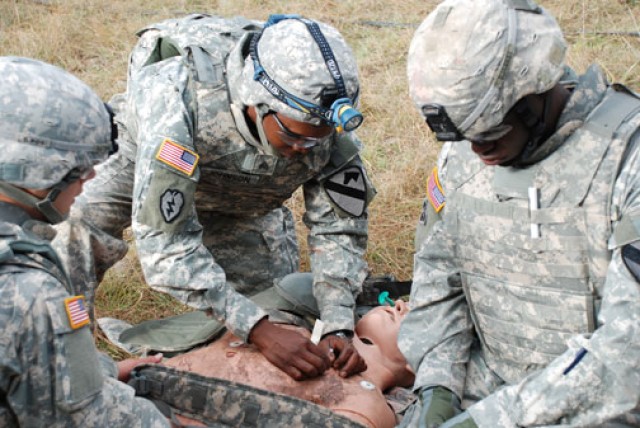

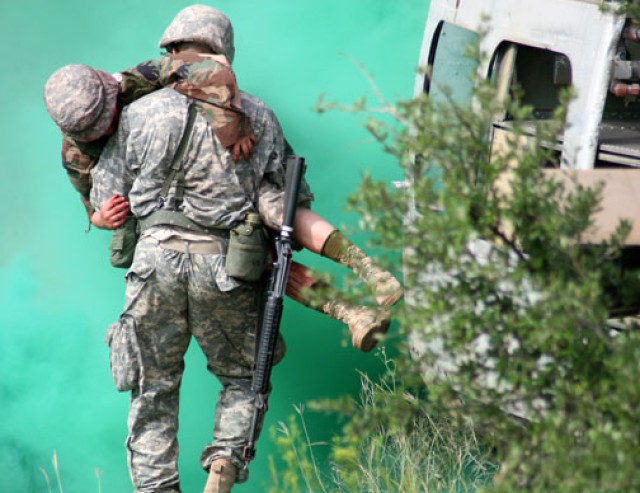
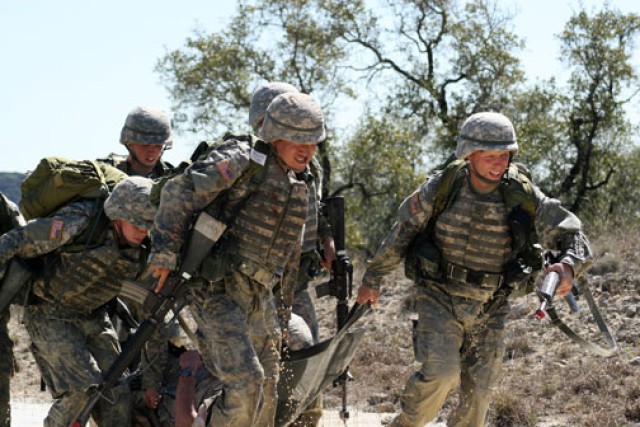

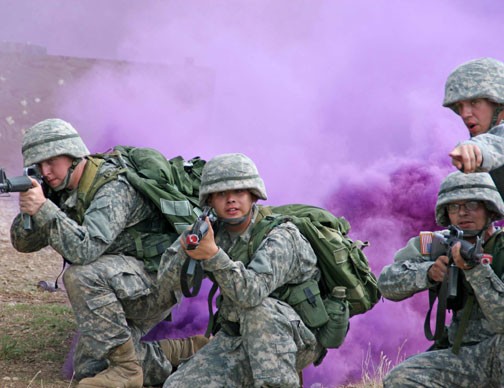
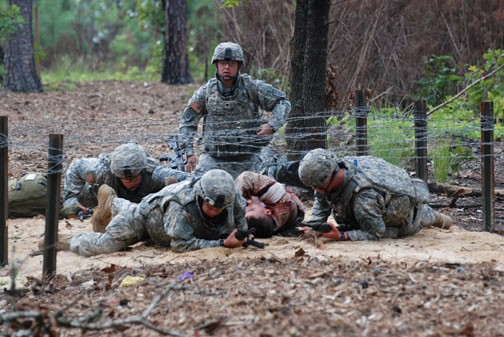

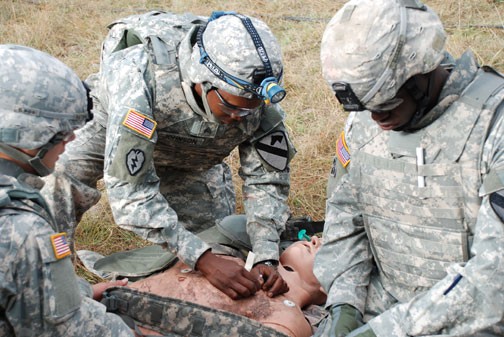
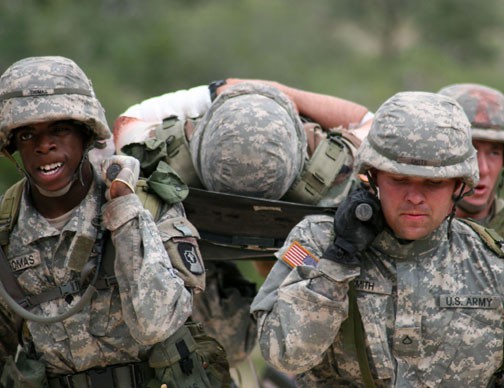


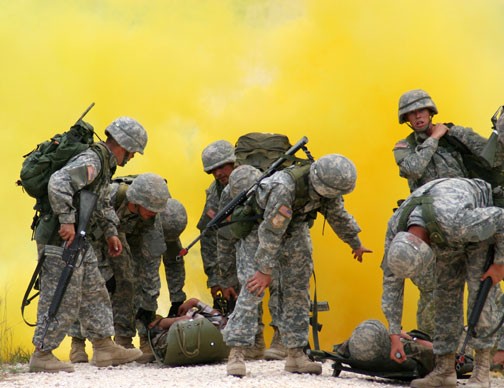
Social Sharing